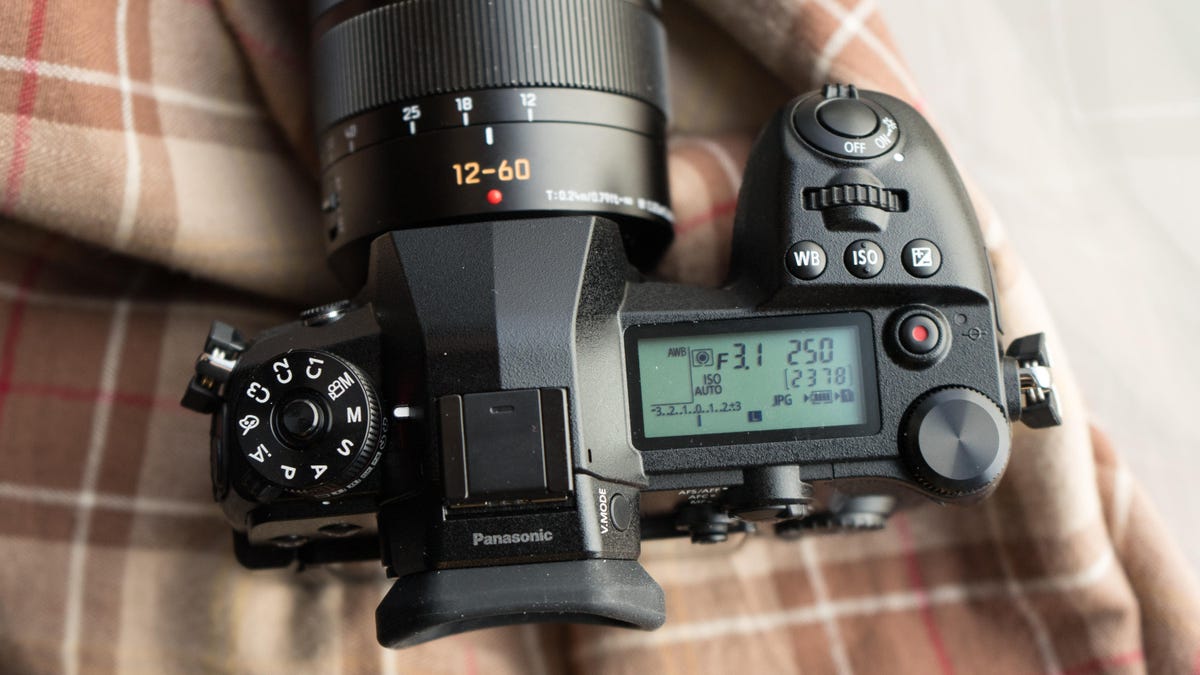
Top
Like many high-end cameras, the G9 has a top status screen. On the side of the viewfinder you can see a "V Mode" button -- that's for changing the magnification of the VF on the fly. It's a great idea, but it doesn't seem to change enough to make a significant difference. You can also see the placement of the record button, which is pretty bad.
Viewfinder
The G9 has a relatively huge, bright viewfinder.
Back
The G9 has a layout designed for quick shooting changes, including a joystick and focus-mode switch.
Drive mode dial
Below the mode dial are the drive-mode options, including the I and II settings from the front switch.
Quick change
You can quickly jump between two preset drive modes via this switch on the front.
Mode dial
Dual card slots
Like the GH5, the G9 sports a pair of UHS-II-compatible SD card slots.
LCD
The G9 has the typical Panasonic touchscreen articulated LCD.
Connections
A full USB 3 and full-size HDMI connector take up space on the side.
Night mode
Panasonic's Night Mode is optimized for low-light viewing without too much illumination.
Video profiles
Panasonic really scaled back video capabilities from the GH5, but the G9 does retain some of the video profiles. The two Cinelike LUTs are the only two pro-level options. The camera doesn't support 10-bit recording, so it's no surprise that it doesn't have an HLG LUT either.
Size
Micro Four Thirds cameras are a nice size for trekking, especially since the lenses are concomitantly small.


